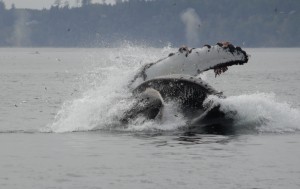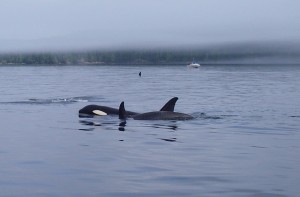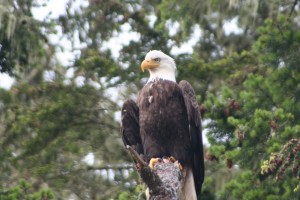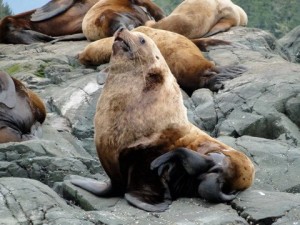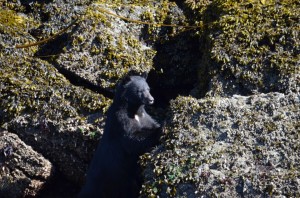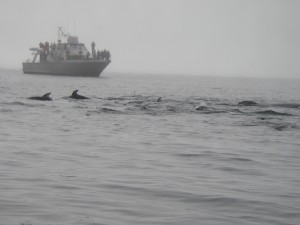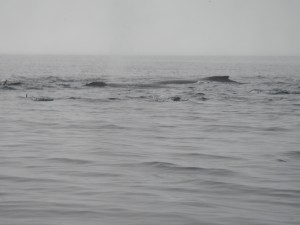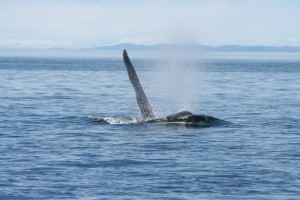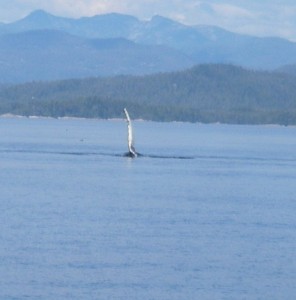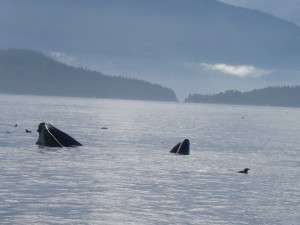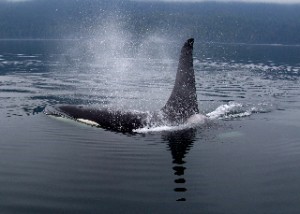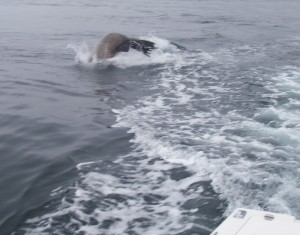
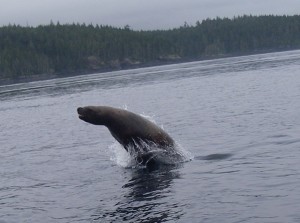
Interesting experience on a whale watching day in Blackfish Sound. We were traveling beside a pod of Pacific whitesided dolphins when I look behind the boat and snapped a photo of what might have been a dolphin playing in the wake of the boat. It was the second photo that made it clear it was a Steller Sealion copying the dolphins. This Sealion repeated this proposing action eight or ten times and the guests got some great photos. It was the first and last time I saw this behaviour in my twelve years guiding for the lodge. The whale watching tours are in an area that provides opportunities for photos of orca, humpback whales, minke whales, Steller sealions, harbour seas, dolphins, harbour porpoise, dall porpoise as well as black bears, eagles and a variety of ducks.
